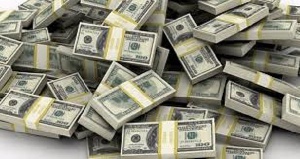 The GIR has risen to US$9.9 billion, equivalent to 5.1 months of import cover
The GIR has risen to US$9.9 billion, equivalent to 5.1 months of import cover
Ghana’s Gross International Reserves (GIR) has shot up by 32.8 per cent as of April 2019 compared to the last figure recorded at the end of December 2019 due to favourable prices of the country’s main exports to the international market.
“As of end of April 2019, the Gross International Reserves was US$9.3 billion (4.7 months import cover), largely on account of energy-related debt payments and higher obligations associated with externally held domestic debt payments,” Governor of the Bank of Ghana (BoG), Dr Ernest Addison said at a press conference on Monday, 27 May 2019 after a Monitory Police Committee (MPC) meeting.
The GIR has risen to US$9.9 billion, equivalent to 5.1 months of import cover as of the end of March 2019 from US$7.0 billion, which was equivalent to 3.6 months of import cover at the end of December 2018.
However, accumulated debts in the energy sector scrapped away US$600 million of the reserves in April.
Dr Addison explained that the increase was as a result of price movements of oil, gold and cocoa.
He said Brent crude prices went up by 24.3 per cent on a year-to-date basis to an average of US$71.7 per barrel in April 2019. It is expected to trade around the same price by the end of the second quarter.
Gold prices on the international commodities market also inched up on the average by 2.8 per cent on a year-to-date basis to settle at US$1,286.2 per fine ounce in April “due mainly to perceived market risks and increasing uncertainty”.
Cocoa, which is the main cash crop of the West African country, enjoyed favourable conditions fetching premium prices.
On a year-to-date basis, average cocoa prices have risen by 5.1 per cent to an average of US$2,370.4 per tonne in April 2019.
An increase in the production of gold and crude oil coupled with price hikes “alongside a relatively lower import bill had a positive effect on the trade balance”.
The country, therefore, recorded a trade surplus of US$1.3 billion, representing 1.9% of Gross Domestic Product (GDP) for the first four months of 2019 compared with a surplus of US$1.0 billion representing 1.6% of GDP in the same period of 2018.